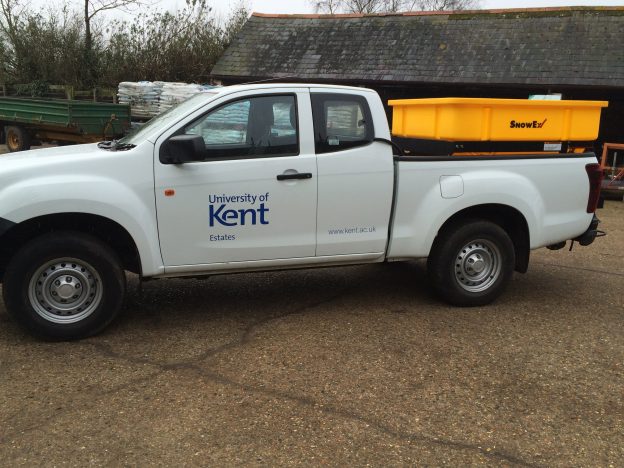Timing is everything. If you go too early, you waste it, because it lands on a dry road and is blown away by the displaced air as vehicles drive past. If it is raining heavily (like yesterday afternoon) then it just washes away. Ideally it goes down on a damp surface and starts to stick, but if you are too late the surface is already frozen and the salt has to work harder to be effective but will prevent big sheets of ice forming.
The salt is hygroscopic which means that it attracts moisture from the air and it only becomes activated when it’s ‘trafficked’. So when it’s driven over the salt grinds down and mixes with the moisture it attracts and becomes the ideal brine, a salty water, which is when it is most effective.
Estates staff have all been working hard to ensure that the University can continue to operate during these adverse weather conditions. Please be aware that Canterbury campus is over 300 acres and has many walkways, steps, roads, car parks, accessible ramps and cycle routes. Similar to how local authorities manage gritting, we grit these areas according to their priority as not all areas can be covered at all times.
We would like to thank Grounds Maintenance at Canterbury campus and FM team at Medway campus for being on site last night and the early hours of this morning to make sure the priority roads and footpaths are gritted.
